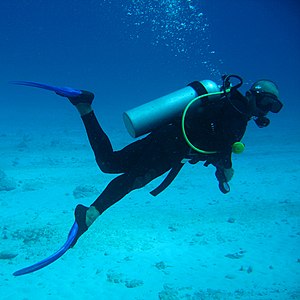Travel agents in North Sulawesi will be happy to arrange ground and air transportation for you and your companions. Local guides will take you to the lush highlands, exotic rainforests, and nearby islands for trekking, hiking, and adventure.
Contact the Travel Agent by visit www.sulutprov.go.id/budpar/index.html as a Legal Organization that hadle about Tourism in North Sulawesi (Sulawesi Utara).
TRAVEL in NORTH SULAWESI
TRAVELLING BY AIR
North Sulawesi is easily reachable by international & domestic flights. Sam Ratulangi International Airport, located 13 km from Manado serves not only as the basis to link Manado with Jakarta and other cities but also is the basis of transit to and from Palu - Balikpapan - Banjarmasin - Ternate - Ambon - Sorong - Biak - and Jayapura.
The smaller airports in the province handle domestic air travel. These smaller airports are located in Ternate, Gorontalo, Sangihe, and Talaud.
North Sulawesi is serviced by national and international carriers alike: Garuda Indonesia, Merpati Nusantara Airlines, Lion Air, Air Asia and Silk Air (the regional carrier of Singapore Airlines). Currently, Wings Air has flights from Davao City to Manado once a week, Silk Air has direct flights from Singapore to Manado four times weekly, and Air Asia offers direct connections from Kuala Lumpur, three times weekly.
TRAVELLING BY SEA
North Sulawesi can be accessed by sea. The port of Bitung has a large and modern wharf 1,127 m long, located on the northern coast is undoubtedly the most important port, serving shipping lines in North Sulawesi as well as the eastern part of Indonesia. This natural port, shielded by Lembeh Island, is one of the officially designated ports of entry and departure of tourists visiting Indonesia. Other ports in North Sulawesi are Manado, Melonguane, Lirung, Siau, Gorontalo, and Kwandang.
Shipping line in this province are served by P.T Pelni, a state owned shipping company, and private companies such as PT Holpers Line.
TRAVELLING BY ROAD
Intercity travel in North Sulawesi is quite easy particularly from Manado to Minahasa, Bitung, Bolaang Mongondow and Gorontalo.
Travel to and from North Sulawesi, by road, is an adventure. Long distance busses to Gorontalo, Palu, Poso (Central Sulawesi) and Ujung Pandang (South Sulawesi) are available. Trips to South Sulawesi may take several days.
LOCAL TRANSPORTATION
Local transportation is provided primarily by "Oplet/Mikrolet". These kinds of vehicles are used to provide city transportation for 7-14 passengers.
TAXY
Taxis are available in most municipalities. Always ask the driver to use the meter. Taxis are reasonable and can be a good alternative to the crowded Mikrolets of the city.
BENDI
The Bendi is the traditional cart pulled by a horse, and can seat up to four passengers. This is a definite must for first time adventuresome travelers. The inexpensive fare depends on the distance traveled.
Contact the Travel Agent by visit www.sulutprov.go.id/budpar/index.html as a Legal Organization that hadle about Tourism in North Sulawesi (Sulawesi Utara).
TRAVEL in NORTH SULAWESI
TRAVELLING BY AIR
North Sulawesi is easily reachable by international & domestic flights. Sam Ratulangi International Airport, located 13 km from Manado serves not only as the basis to link Manado with Jakarta and other cities but also is the basis of transit to and from Palu - Balikpapan - Banjarmasin - Ternate - Ambon - Sorong - Biak - and Jayapura.
The smaller airports in the province handle domestic air travel. These smaller airports are located in Ternate, Gorontalo, Sangihe, and Talaud.
North Sulawesi is serviced by national and international carriers alike: Garuda Indonesia, Merpati Nusantara Airlines, Lion Air, Air Asia and Silk Air (the regional carrier of Singapore Airlines). Currently, Wings Air has flights from Davao City to Manado once a week, Silk Air has direct flights from Singapore to Manado four times weekly, and Air Asia offers direct connections from Kuala Lumpur, three times weekly.
TRAVELLING BY SEA
North Sulawesi can be accessed by sea. The port of Bitung has a large and modern wharf 1,127 m long, located on the northern coast is undoubtedly the most important port, serving shipping lines in North Sulawesi as well as the eastern part of Indonesia. This natural port, shielded by Lembeh Island, is one of the officially designated ports of entry and departure of tourists visiting Indonesia. Other ports in North Sulawesi are Manado, Melonguane, Lirung, Siau, Gorontalo, and Kwandang.
Shipping line in this province are served by P.T Pelni, a state owned shipping company, and private companies such as PT Holpers Line.
TRAVELLING BY ROAD
Intercity travel in North Sulawesi is quite easy particularly from Manado to Minahasa, Bitung, Bolaang Mongondow and Gorontalo.
Travel to and from North Sulawesi, by road, is an adventure. Long distance busses to Gorontalo, Palu, Poso (Central Sulawesi) and Ujung Pandang (South Sulawesi) are available. Trips to South Sulawesi may take several days.
LOCAL TRANSPORTATION
Local transportation is provided primarily by "Oplet/Mikrolet". These kinds of vehicles are used to provide city transportation for 7-14 passengers.
TAXY
Taxis are available in most municipalities. Always ask the driver to use the meter. Taxis are reasonable and can be a good alternative to the crowded Mikrolets of the city.
BENDI
The Bendi is the traditional cart pulled by a horse, and can seat up to four passengers. This is a definite must for first time adventuresome travelers. The inexpensive fare depends on the distance traveled.








